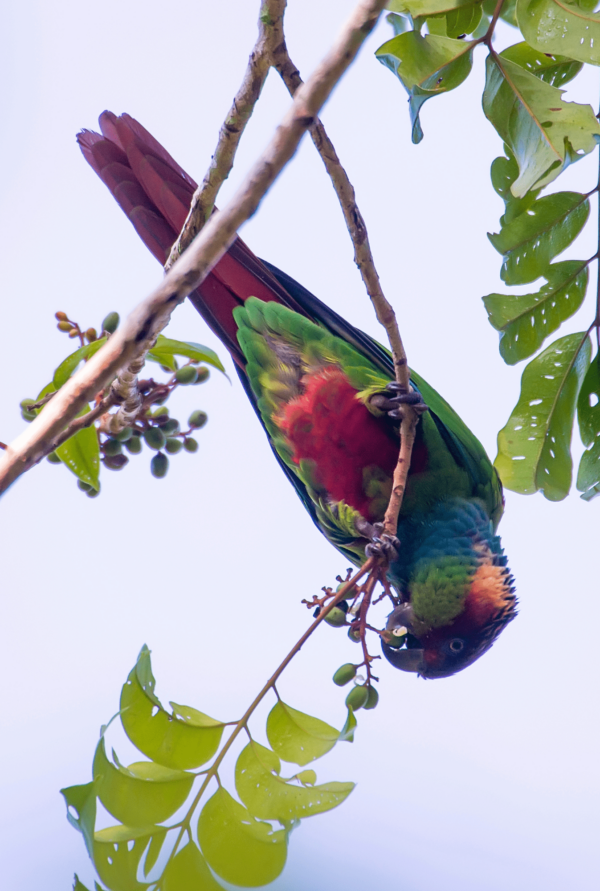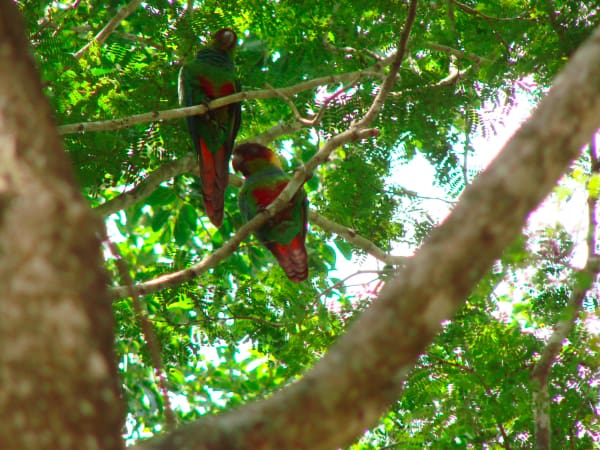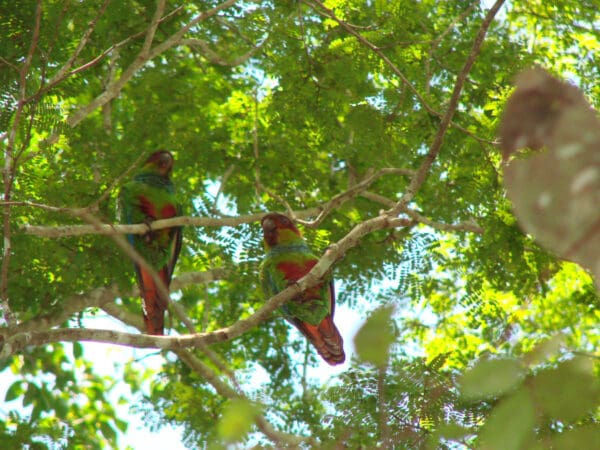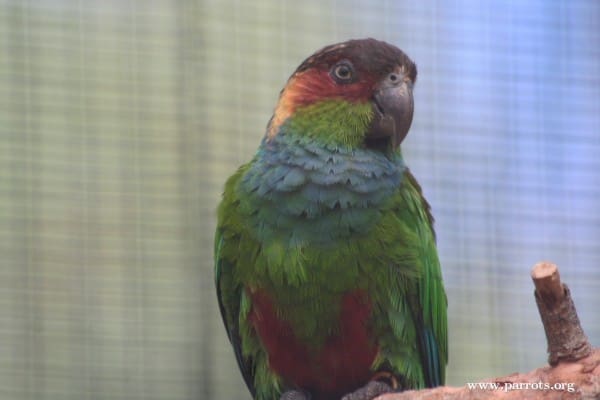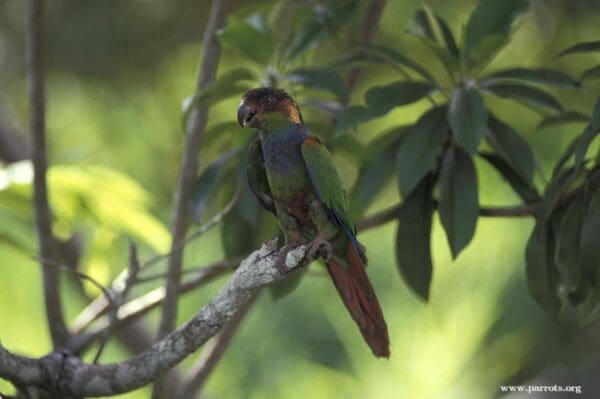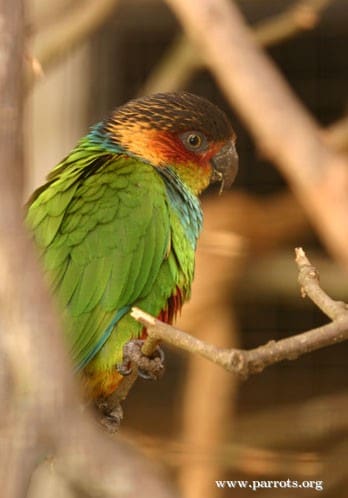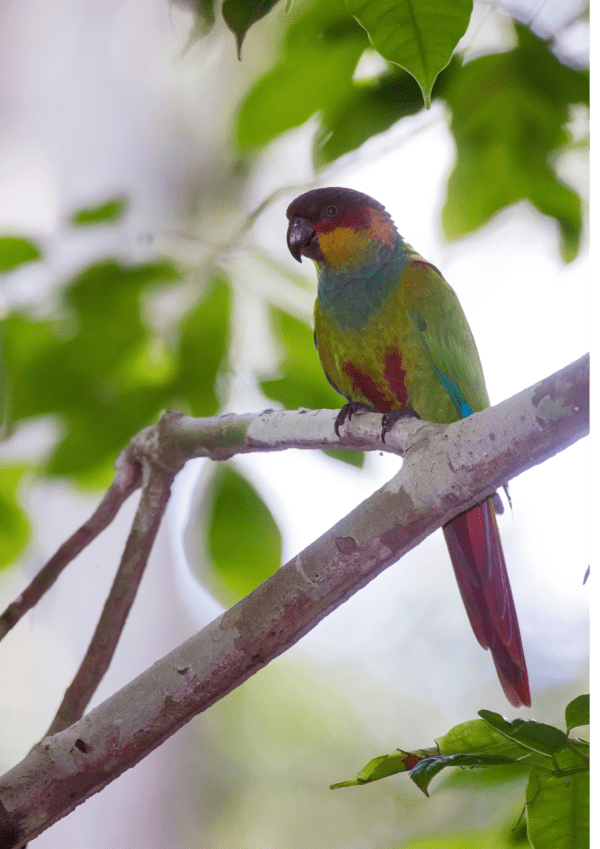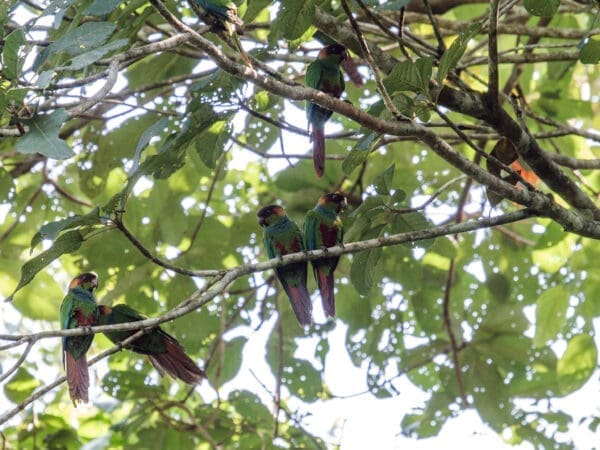Blue-throated Conure
Also known as:
Blue-throated Parakeet, Blue-chested Conure or Parakeet, Ochre-masked Conure or Parakeet, Red-rumped Conure or Parakeet, Red-eared Conure or Parakeet
Also known as:
Blue-throated Parakeet, Blue-chested Conure or Parakeet, Ochre-masked Conure or Parakeet, Red-rumped Conure or Parakeet, Red-eared Conure or Parakeet
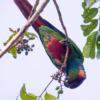

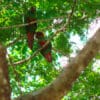

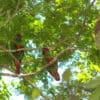
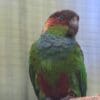
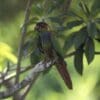

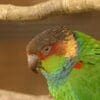
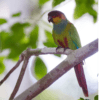
![© Nick Athanas [CC BY-SA 2.0] via Flickr Wild Blue-throated Conures perch in a tree](https://parrots.org/wp-content/uploads/1990/02/Blue-throated-Conure-lg-Nick-Athanas-100x100.jpg)
DID YOU KNOW?
The female Blue-throated Conure tends to be heavier than the male, and more dominant and assertive.

Pyrrhura

cruentata
Size:
30 cm (11.7 in)
Weight:
90 g (3.1 oz)
Subspecies including nominate:
one
Colour Adult:
Both adults partly green in colour; brown/red frontal band, lores and area around eyes to ear coverts; sides of neck yellow/orange; blue upper breast; blue collar encircling hindneck; lower back to rump red; centre of abdomen brown/red; olive tail. Beak grey. Eye ring bare and grey. Eye yellow.
Colour Juvenile:
In general duller than adults. Eye brown.
Call:
Calls made in flight are high-pitched, chattering notes.
More Information:
Content Sources:
CITES
BirdLife International
Cornell Lab of Ornithology/Birds of the World
A Guide to Parrots of the World, Juniper and Parr, 1998
Parrots: Status Survey and Conservation Plan 2000-2004, Snyder, McGowan, Gilardi, Grajal, 2000.
Parrots of the World, Forshaw and Cooper, 1977. 2010 edition
Parrots of the World, Forshaw, 2006.
Parrots in Aviculture, Low, 1992.
Lexicon of Parrots, Thomas Arndt.
Captive Status:
Rare
Longevity:
15-25 yrs
Housing:
Walk-in aviary or suspended enclosure, minimum length 2 m (6.5 ft).
Diet:
Fruits such as: apple, pear, oranges, banana, pomegranate, cactus fruits, kiwi, guava (a favourite), forming about 30 percent of diet; vegetables such as: carrot, celery, green beans, peas in the pod; corn on the cob; green leaves such as: Swiss chard, lettuce, kale, sowthistle, dandelion, chickweed; spray millet; small seed mix such as: canary, millet and smaller amounts of oats, buckwheat, safflower and a little hemp; soaked and sprouted sunflower; cooked beans and pulses, boiled maize and complete pellet.
Enrichment:
Enjoy bathing so provide overhead misters or shallow bowls of water daily. Also provide bird-safe, unsprayed flowering, fir, pine, willow or elder branches; wooden block or vegetable tanned leather toys.
Nest Box Size:
Vertical box 10″ x 10″ x 28″ (25.4 cm x 25.4 cm x 71.1 cm).
Clutch Size:
4-7
Fledging Age:
7-8 weeks
Hatch Weight:
—
Peak Weight:
—
Weaning Weight:
—
World Population:
3500-15,000, decreasing.
IUCN Red List Status:
Vulnerable
CITES Listing:
Appendix I
Threat Summary:
This species is threatened by continuing forest and habitat clearance over the last century. There is also some trapping for the bird trade, but this is a relatively new occurrence.
Range:
E Brazil, from southern Bahia south to Rio de Janeiro.
Habitat:
Found up to 400 m (1312 ft), occasionally 900 m (2952 ft) in primary rainforest or forest edge and in slightly modified natural forest near cultivated areas.
Wild Diet:
Feeds on seeds and fruits of Trema micrantha, Cecropia, Talisia esculenta, Alchornea iricurana and Mabea fistulifera, and Miconia hypoleuca important in periods of general fruit scarcity.
Ecology and Behaviour:
Gregarious; generally seen in flocks of 6-20 birds where food is abundant. Feeds in canopy and lower edge foliage.
Clutch and Egg Size:
4-7 rounded eggs, 27.5 x 20.0 mm (1.1 x 0.8 in).
Breeding Season:
September-December. Nest is in tree cavity.
Related Links:
